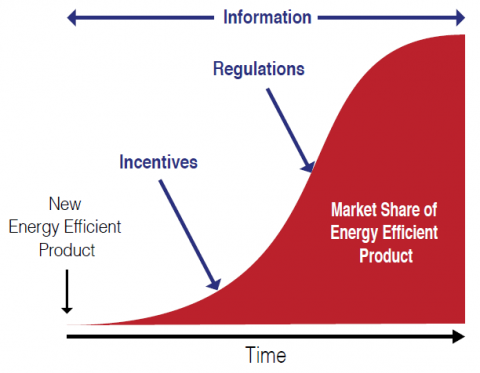It’s that time of the year again — time to recognize those who have been pushing the envelope to help homeowners shrink their energy bills, save money and reduce their environmental impact through the Scotiabank EcoLiving Awards. Last year, Vancouver’s Lanefab, Toronto’s Quinzee, and Benjamin Gillies, a graduate of the University of Manitoba, were celebrated for developing innovative new ways to reduce energy use for homeowners.
This year, the Pembina Institute will again be joining Scotiabank’s EcoLiving Awards judging panel. Be sure to encourage energy efficiency innovators you know to submit an application by March 15!
At Pembina, we know the value of supporting energy efficiency efforts. We recently worked with the Alberta Energy Efficiency Alliance (AEEA) on a report which demonstrated that Albertans and Alberta businesses could save $1.5 billion per year and the province could meet half of its climate target today through energy efficiency upgrades alone. Not only do these upgrades save money for homeowners and reduce environmental impacts, they also result in a net increase in jobs and economic activity. As James Furlong, the Board Chair of the AEEA says, “It’s a win-win.”
Unfortunately, history shows that high-efficiency products don’t always get widely adopted on their own — even if they are cheaper than ‘business as usual’.
To take advantage of what energy efficiency has to offer, a combination of approaches is necessary. In the energy efficiency world, these approaches are often broken down into three categories: information, incentives, and regulations. The figure below shows how these three approaches work together to transition the marketplace to higher-efficiency products over time.

We’ve seen energy efficiency ‘market transformations’ occur many times in the past three decades. It’s happened with appliances, vehicles, energy-using equipment, and now with buildings. But just because we’ve been successful in the past, it doesn’t mean we can afford to stop. New products and services are always being developed so the cycle of information, incentives and regulations needs to repeated over and over. In industry, this is often referred to as a process of continuous improvement.
The Scotiabank EcoLiving program, which includes the annual EcoLiving Awards, helps to educate Canadians on how we can save money by saving energy, while reducing our environmental footprint at the same time. The EcoLiving website includes a financial calculator and information on government rebates, which allow users to plan and finance their projects and see the savings that can result from environmentally friendly renovations. As energy prices continue to increase and residential energy efficiency continues to be a factor in renovation trends, EcoLiving is a resource that provides users with the tools to make informed decisions.
Kudos to Scotiabank for providing much needed leadership in this crucial space. We really are richer than we think!









